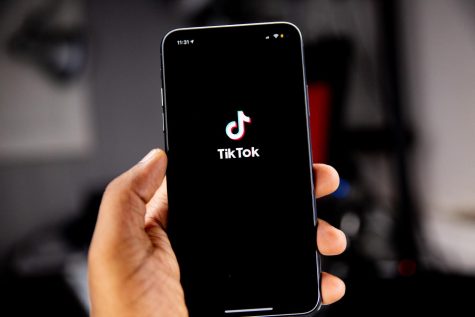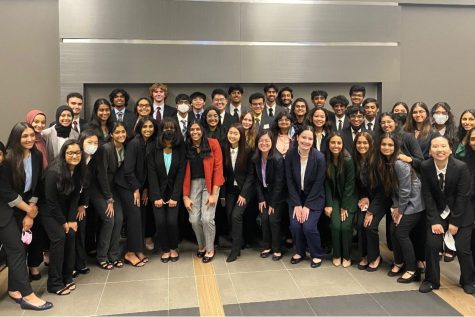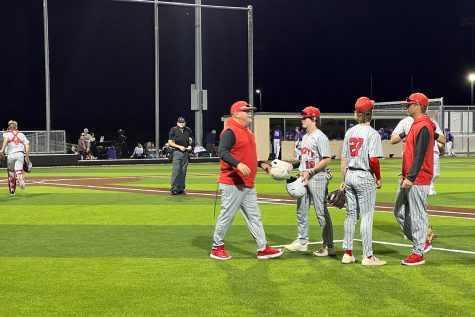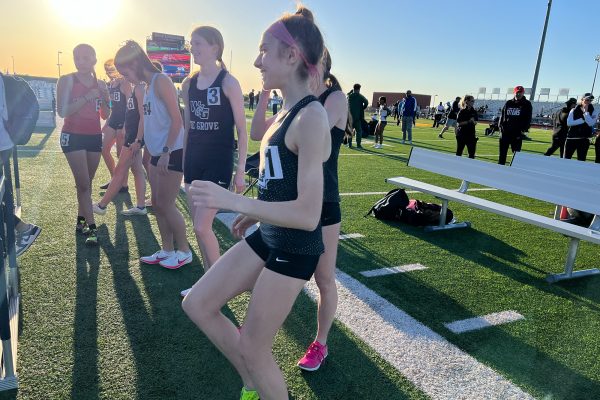Head games
A look at the consequence of concussions in high school sports
An injury once given the euphemism of “having their bell rung”, concussions are now an issue talked about daily in the world of sports, especially in youth sports, where one in five athletes receive concussions during their respective season.
It’s no different here on campus as many athletes have received a concussion in their career.
The sport at Liberty with the most concussions is not football. It’s volleyball. Soccer is up there as well.
— Athletic Trainer Joseph White
“When I got my concussion, I felt a little dizzy and out of place,” senior football player Eliott Ghattas said. “I saw some stars and couldn’t really focus without kneeling. I got headaches and was sensitive to light for a little bit, and couldn’t really eat after it.”
When an athlete receives a concussion, FISD and state laws require the athlete to go through intense and lengthy testing prior to returning to action to the sport.
“Once the concussion is identified, either by a parent, trainer, or coach, we pull them out of play,” trainer Joseph White said. “Once they’ve been out of play, we review them, confirming that they have a concussion. We then send them to a doctor, to check the severity of the concussion before they go to a specific group of doctors who are impact certified. When they are symptom free for 24 hours, and the doctor has given them clearance to play, it is a five day series of progressive exercises. Once they are done with those, they get one more doctor clearance and then are restricted to limited practices. It usually is a two week process.”
The immediate impact of a concussion can be alarming for many. Those who receive a concussion usually feel dizziness, experience headaches, have occasional blurred vision, and often, struggle to recollect certain events.
“After my concussion, my AP World History teacher expected me to do a written assignment during class,” Ghattas said. “I couldn’t remember anything, and ended up failing the assignment because of that.”
The awareness, according to White, has been focused on the wrong areas. Much of the focus has been on football, with retired NFL players filing a lawsuit against the league, over the issue of concussions, and a story by PBS on the issue gaining national attention in 2013. With all the focus with concussions on football, White points out that football does not have the most amount of concussions at the school.
“Concussions are an assumed risk when you play sports, and they’re gonna happen,” White said. “The sport at Liberty with the most concussions is not football. It’s volleyball. Soccer is up there as well.”
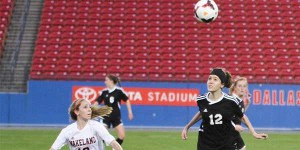
While concussions in football get most of the media attention, other sports such as soccer and volleyball can have a higher rate of concussions. In the picture above, 2015 graduate Sydnee Blaisure gets ready to head the ball during a match against Wakeland at Toyota Stadium earlier this year.
Girls soccer is one of the leaders in concussions among youth. According to a study on concussions in collegiate and high school sports, girls soccer has the highest proportion of injuries in relation to their total, with 15.9 percent of all injuries in the sport coming from concussions.
Head coach Cissy Blaisure agrees that the epidemic is concerning and has even prevented her own daughter from pursuing her career outside of high school.
“Concussions are a major issue in soccer these days,” Blaisure said. “In fact, I would say they are chronic, and have caused many to end their soccer playing careers. My own daughter suffered 4 concussions which was why she ultimately decided not to continue and play in college. Over the years I have seen several players have to sit out of school for months while trying to recover in complete dark rooms while suffering major symptoms and pain. I definitely think we need to do something.”
In a recent report by HBO’s Real Sports, many claimed that heading, a common technique used by soccer players to control the ball, should be banned until the age of 14. One of those advocates of the plan was former national team and World Cup winner Brandi Chastain. Blaisure believes that Chastain is on the right track, but doesn’t agree with the notion that headers cause concussions.
“Most of the concussions I have seen as a coach do not come from heading the ball,” Blaisure said. “Most are from direct contact with two people colliding mid air on while making a tackle. I have had players hit their heads on the ground after going up to receive the ball and I’ve had players been hit by balls being crossed or shot and they could not avoid getting hit. I do believe Brandi Chastain sees the issue as being chronic and is trying to prevent further injury. However, if they do not learn how to head the ball correctly, regardless of age, they will get hurt. I believe headgear is a start, and having players sit out until the concussion symptoms are completely gone is also helping many concussions from being major. Prevention is key, proper technique is key, and being fit and strong enough to handle the game is also huge.”
Concussions are a major issue in soccer these days.
— girls head soccer coach Cissy Blaisure
Rather than scaring people, White says, the focus should be on teaching people what happens when they receive a concussion.
“We need to teach people exactly what is going on when one receives a concussion,” White said. “They know what a concussion is, but they don’t know exactly medically what is going on. I think we need to examine ways to return back safer, and to provide the body what it needs to come back safer. I think their is a big gap in treatment in regards to nutrition.”
Echoing the same thoughts as White, offensive line coach Trey Bandy used his own experience with concussions to describe how he feels about the issue.
“There’s a lot of things I don’t remember from my football career,” Bandy said. “But outside of that, I am fine, and it hasn’t really impacted my life today.”
However, Bandy reiterates that a serious concussion is nothing to joke around with.
“A serious concussion is an ongoing thing. It doesn’t just go away,” Bandy said. “It’s pretty lasting. It affects knowledge, memorization, headaches, and the functioning of your brain. Basic things can be difficult. A serious concussion can have a long lasting impact, but it can go away. It shouldn’t scare you from the sport; concussions can be obtained doing everyday things.”
With the new technology out to help concussion recovery, White says it’s time to look at the recovery aspect of the concussion.
“The stuff out there is pretty impressive,” White said. “Now we need to stop focusing on the hows and whats of a concussion and scaring people, and instead focus on helping the body recover from the concussion.”
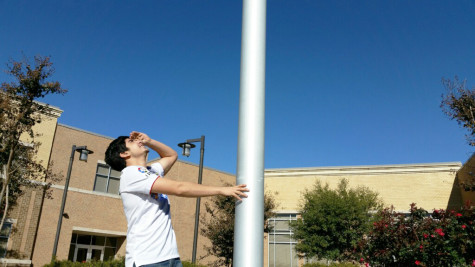
Arman Kafai was born in Plano, Texas, and has lived in the North Texas area for the last 18 years. When he’s not digging through his list of stories...
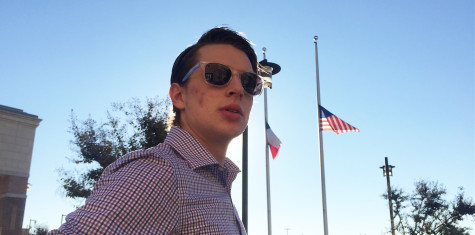
Jay Schlaegel is a familiar face on the Wingspan staff. In addition to being 2014-2015’s R-H-T-V Chief Editor, he has been a contributing reporter and...



